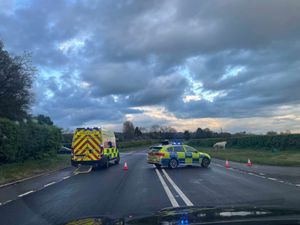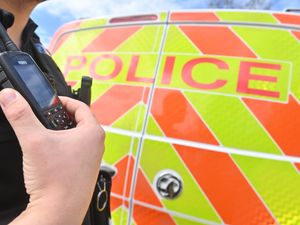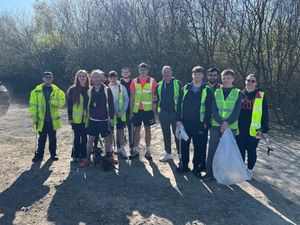Major incident declared in Staffordshire due to rise in Covid cases
A major incident has been declared in Staffordshire for the second time due to the rise in coronavirus cases in the county.

It means public and emergency services across Staffordshire will be able to pool resources as staff are increasingly forced to self-isolate.
Coronavirus cases and hospital admissions have surged as the infection rate has risen in recent weeks, resulting in the Covid alert level being raised from Tier 1 to Tier 2 across the county.
The Stoke-on-Trent council area was raised to the Tier 2 "high risk" alert level last week and Staffordshire will join it in Tier 2 from midnight on Saturday.
Dudley and Telford & Wrekin were also announced as moving into Tier 2 in the House of Commons yesterday.
More Covid-19 coverage:
The major incident has been declared as South Staffordshire struggles with the highest infection rate of any area in the West Midlands.
The latest full figures show the borough had 401.1 cases per 100,000 people in the week to Monday, compared to 343.4 in Cannock Chase and 336.3 in Walsall.
In comparison Manchester, which is in the stricter Tier 3, had a rate of 498.3 cases.
Latest Covid-19 infection rates
The latest rolling seven-day infection rate of Covid-19 by local authority area, compared to the previous week.
The figures are for the seven days to October 26, with data for the most recent four days (October 27-30) excluded as it is incomplete and does not reflect the true number of cases.
The rate is expressed as the number of new cases per 100,000 people.
From left to right, it reads: name of local authority; rate of new cases in the seven days to October 26; number (in brackets) of new cases recorded in the seven days to October 26; rate of new cases in the seven days to October 19; number (in brackets) of new cases recorded in the seven days to October 19.
South Staffordshire 401.1 (451), 237.5 (267)
Cannock Chase 343.4 (346), 230.2 (232)
Walsall 336.3 (960), 235.0 (671)
Sandwell 317.9 (1044), 223.5 (734)
Stoke-on-Trent 315.9 (810), 221.6 (568)
Birmingham 276.4 (3156), 240.6 (2747)
Dudley 260.6 (838), 163.9 (527)
Wolverhampton 251.0 (661), 197.8 (521)
Stafford 243.3 (334), 162.4 (223)
Lichfield 234.8 (246), 164.2 (172)
Solihull 229.2 (496), 225.5 (488)
Telford and Wrekin 219.6 (395), 168.5 (303)
Shropshire 135.5 (438), 87.3 (282)
The decision to declare a major incident was made by Staffordshire Resilience Forum, which is made up of multiple agencies who work together to plan and prepare for localised incidents and civil emergencies.
It said that declaring a major incident would allow enhanced multi-agency activity and co-ordination, which is beyond the scope of current operations.
'Please follow the law'
Dr Richard Harling, the director for health and care at Staffordshire County Council is chairing the Strategic Coordinating Group which is overseeing the multi-agency response.
He said: “Everyone is now aware that we are seeing a second surge in coronavirus with infections and hospital admissions rising rapidly across the county.
"We are asking the public to continue to do everything they can to reduce the spread of infection and prevent more people getting sick and dying from this disease.
“Declaring a major incident for a second time is a clear recognition of the seriousness of the situation across the county.
"We know from the first wave, that tackling the spread of the virus and the related impacts is going to take time and persistence.
“All public sector agencies and our partners are already working together in Staffordshire and Stoke-on-Trent to anticipate and deal with challenges.
"Declaring a major incident will make sure that we are able to share resources, where necessary. This will be important as we expect that more staff may need to self-isolate in the coming weeks."
Dr Harling added: “Working together is something that we do all the time and the action we are now taking is simply aimed at making that process even more joined-up.
“It is important that people continue following the law and national guidance from the Government in line with the restrictions for 'High Alert' level areas.”
The objectives of the SRF are to protect life, especially vulnerable people; minimise the impact of the pandemic and control measures on wider society and the economy; maintain public trust and confidence; and support business continuity for all partners in particular for the NHS and social care.





